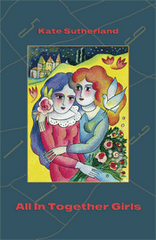The interiority of the story is underscored for me by the way that Joyce uses space and place within it to highlight contrasts and mark transitions. The houses of North Richmond Street are associated with stuffy, respectable adulthood while the street itself is the terrain of childhood. The houses, in contrast to a vacant one at the end, are described thus in the opening paragraph: “The other houses of the street, conscious of decent lives within them, gazed at one another with brown imperturbable faces.” But the street itself can be a more raucous place:
When we met in the street the houses had grown sombre. The space of sky above us was the colour of ever-changing violet and towards it the lamps of the street lifted their feeble lanterns. The cold air stung us and we played till our bodies glowed. Our shouts echoed in the silent street.
The back lane is more adventurous territory still, not theirs but navigable nonetheless:
The career of our play brought us through the dark muddy lanes behind the houses, where we ran the gauntlet of the rough tribes from the cottages, to the back doors of the dark dripping gardens where odours arose from the ashpits, to the dark odorous stables where a coachman smoothed and combed the horse or shook music from the buckled harness.
Back on the front street, the narrator and his playmates still opt for the shadows beyond the light thrown by the kitchen windows. They duck out of view when the narrator’s uncle comes past on his way home, or when his friend Managan’s sister calls him in for his tea.
But when the narrator becomes smitten with Managan’s sister, despite never having so much as exchanged a word with her, he confines himself more often to his house. He lies on the floor of the front parlour where he can watch through the window for her to appear on her front doorstep. He ventures into the back drawing room where the previous tenant, an old priest, had died, to vent his desire in privacy. Finally, after Managan’s sister speaks to him at last, and he begins to anticipate a real connection between them, he goes to the top of the house, distancing himself further from the “child’s play” he now disdains:
I mounted the staircase and gained the upper part of the house. The high, cold, empty, gloomy rooms liberated me and I went from room to room singing. From the front window I saw my companions playing below in the street. Their cries reached me weakened and indistinct and, leaning my forehead against the cool glass, I looked over at the dark house where she lived. I may have stood there for an hour, seeing nothing but the brown-clad figure cast by my imagination, touched discretely by the lamplight at the curved neck, at the hand upon the railings and at the border below the dress.”
The connection that the narrator anticipates has to do with a planned visit to Araby, “a splendid bazaar.” When Managan’s sister spoke to him finally, it was to ask if he was going to Araby. She can’t go herself as she is to attend a convent retreat that weekend, and he tells her that if he goes he will bring her something back.
Araby is associated with neither childhood nor respectable adulthood; it’s another space entirely. The very name “cast[s] an Eastern enchantment over” the narrator. He nearly doesn’t make it there when his uncle forgets to return home in time to give him money to go. But finally, after an anxious train journey, the narrator arrives at the bazaar at ten minutes to ten on Saturday night.
I found myself in a big hall girded at half its height by a gallery. Nearly all the stalls were closed and the greater part of the hall was in darkness. I recognized a silence like that which pervades a church after a service.
He listens to the stallholders counting money and gossiping to one another. Even those few stalls that are still open are clearly not keen for his business so late at night.
What better place than an exotically named bazaar a train journey from home to represent a fantasy just out of reach? And what better place than that bazaar at closing, its gaudy facade let down, its aisles empty of revellers, to bring home the recognition that the fantasy is out of reach and remains just that, a fantasy?
The story ultimately is masterful in taking not just the narrator but also the reader from the space of childhood (the bracing chill of the dark street ringing with boys’ shouts) to the awkward in-between (confining oneself to private corners of the house then railing against that confinement) to young adulthood (and the sharp moments of disillusionment it inevitably brings).
“Araby” is the third of fifteen stories contained in James Joyce’s collection The Dubliners. But it’s such a perfect coming-of-age story that I’m thinking of the collection now as book-ended with “Araby” at the beginning and “The Dead,” a masterpiece of a story about, among other things, aging and death, at the end, and I’m very keen to read the collection from start to finish to see what I make of it as a whole.
Drop by A Curious Singularity to read what other bloggers have written about James Joyce's "Araby."

1 comment:
I'll be teaching this story soon in my Brit Lit class; I'm going to keep your points about space in mind as I do it!
Post a Comment